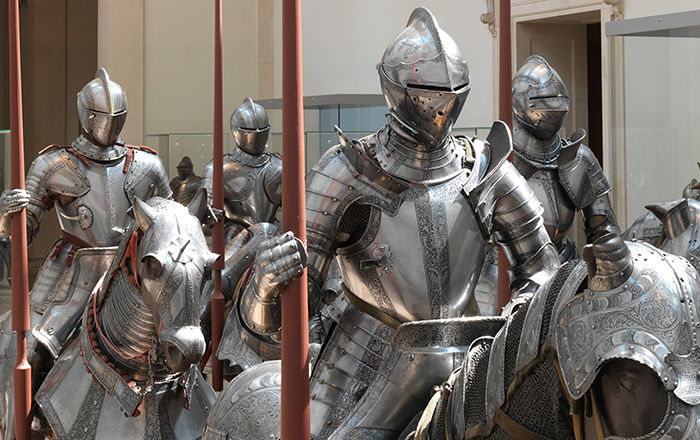Sculpture of Saint Eloi Working on an Anvil in the Style of the 16th Century
Not on view
James J. Rorimer (1905–1966), was Director of The Metropolitan Museum of Art from 1955 to 1966. Beyond the confines of The Met, he is perhaps best known as one of the Monuments Men, a special taskforce of US and allied servicemen and women who worked to protect and restitute tens of thousands of works of art that were looted by Nazis during World War II. Before the war Rorimer was Curator of Medieval Art at The Met. In 1934 he was asked by Stephen V. Grancsay (1897–1980), Curator of Arms and Armor, to give his opinion on this sculpture of St. Eloi. Rorimer’s skill and knowledge as an expert in medieval art are evident from his comments.
"I examined the statue and showed M. Grancsay my results. The hammer has been restored since it was in the Museum (see catalogue card photograph) as also the fore finger of the right hand. The saint's costume has been scraped and patched with plaster and paint in various places. This no doubt, as is also the shortening of the skirt and the recutting of the legs and parts of the standard on which the anvil is placed, the work of the restorers who worked for Demotte. This method of restoring, including the type of paint used (note the crackle) is similar to that of the many forgeries produced by this workshop. The head also was broken off, patched and replaced, but most of the paint of the face, like that on the hands and on the top and bottom sections of the anvil, is original." (J. Rorimer, Nov. 27th, 1934)
This image cannot be enlarged, viewed at full screen, or downloaded.
This artwork is meant to be viewed from right to left. Scroll left to view more.









